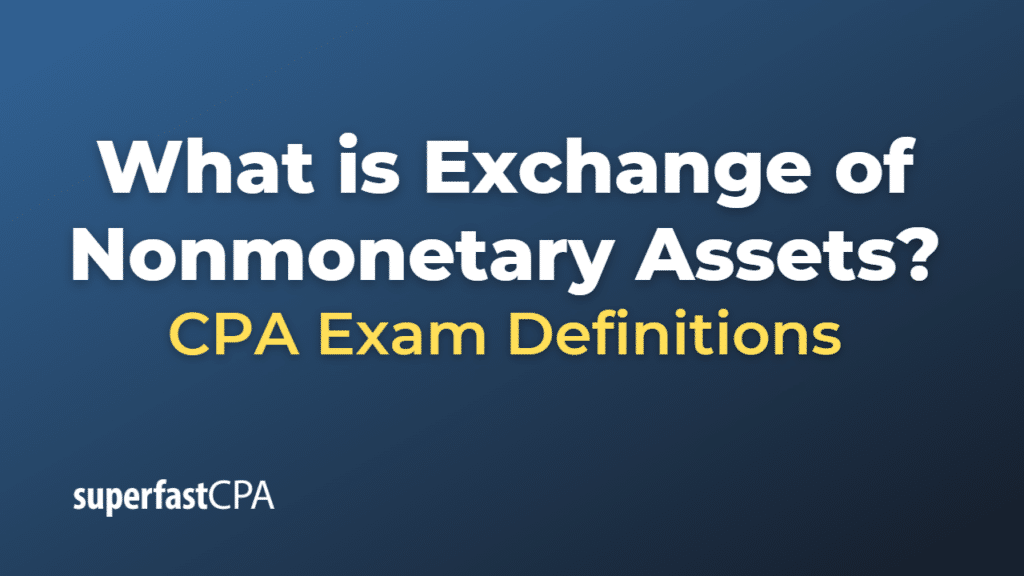Exchange of Nonmonetary Assets
The exchange of nonmonetary assets refers to a transaction where business entities swap noncash assets. Examples of nonmonetary assets include items like buildings, land, equipment, intangible assets (like patents or trademarks), and goods or services. These transactions occur for various strategic reasons such as expansion, acquiring assets better suited to a company’s needs, or diversification.
Accounting for such transactions can be complex and depends on whether the transaction has commercial substance. Commercial substance means the future cash flows of the entities involved in the exchange are expected to change significantly as a result of the transaction.
If the exchange has commercial substance, the new asset is recorded at fair value, and a gain or loss on the exchange is recognized. If it lacks commercial substance, the acquired asset is usually recorded at the book value of the asset given up, and gains are typically not recognized unless cash is received.
These rules are based on the guidance provided in the Financial Accounting Standards Board’s (FASB) Accounting Standards Codification (ASC) 845 – Nonmonetary Transactions. However, they can be complex and may need careful interpretation based on the specific facts and circumstances of the transaction, and the relevant accounting standards and practices in a particular jurisdiction.
It’s always advisable to seek professional advice when accounting for these transactions to ensure they are reported correctly.
Example of the Exchange of Nonmonetary Assets
Let’s consider a hypothetical scenario for the exchange of nonmonetary assets.
Suppose there are two companies, Company A and Company B. Company A has a piece of land valued at $1 million on its books, and Company B owns a building with a book value of $900,000. Both parties agree that the fair market value for both assets is $1.2 million.
Company A and Company B decide to swap these assets, as Company A is planning to construct a new office building, and Company B wants to expand its real estate holdings without maintaining a building.
If this exchange has commercial substance (i.e., the cash flows of both companies are expected to change significantly as a result of the exchange), both companies would record the acquired assets at their fair value. So, Company A would record the building at its fair value of $1.2 million, and Company B would record the land at its fair value of $1.2 million.
Additionally, Company A would record a gain of $200,000 on the exchange (the fair value of $1.2 million less the book value of $1 million), and Company B would record a gain of $300,000 (the fair value of $1.2 million less the book value of $900,000).
Again, please note that these are general guidelines and the specific accounting treatment can depend on the particular facts and circumstances, as well as the relevant accounting standards and practices in a specific jurisdiction. Professional advice should be sought for these types of transactions.













